By Diane Harris, HQ Stitch Brand Ambassador
I pay more attention to quilting than I used to. The educators at Handi Quilter are rubbing off on me!
I notice especially when the quilting is its own design element.
Here’s what I mean.
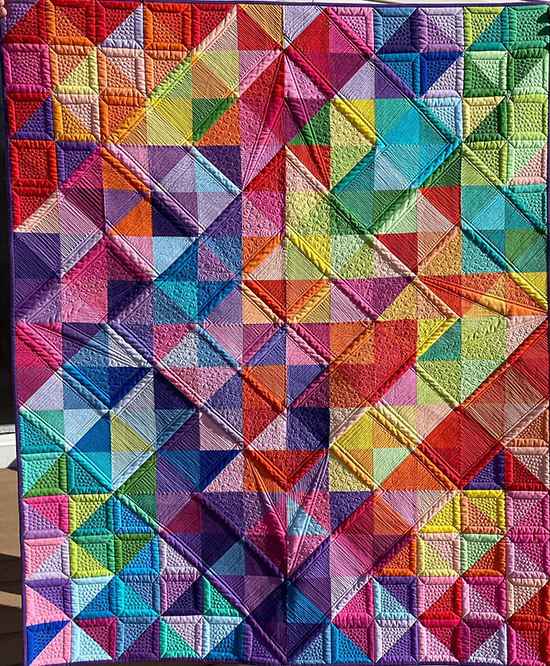
Postcard from Sweden, made by Jane Hauprich of Stitch by Stitch Custom Quilting. Design: Kelly Liddle of Jeli Quilts.
The quilt above stopped me in my tracks. The piecing is simple. The color placement is more complex. But then there’s the quilting—completely over the top. I reached out to Jane Hauprich, owner of Stitch by Stitch Custom Quilting and National Educator for Handi Quilter.

Postcard from Sweden top before quilting
Jane sent me photos, including one of her top before it was quilted, above.
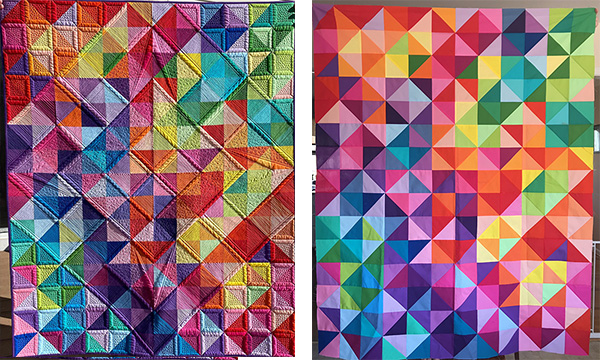
When the images are side by side, the difference is striking. Jane used the quilting as another design element. In the picture on the right, there is shape, color, contrast, rhythm, repetition and more. But once the piece is quilted, there’s a new layer of interest. Now there is light and shadow, and even shapes that weren’t there before.

Now there is contrast between areas—in new and interesting ways.

Jane imagined new shapes. She created new sections. She added texture and she draws your eye across the quilt with strong lines.
This is exciting to me so I asked Jane if she had other examples. Of course she did!
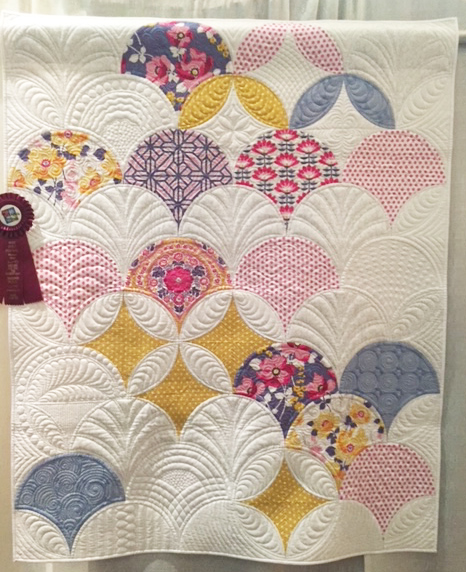
Clamshell, pieced by Rhonda Adams, Grasonville, Maryland. Quilted by Jane Hauprich.
This Clamshell pieced by Rhonda Adams would have been pretty as a top. But do you see how the interest grows even more because of the quilting? Jane used those open spaces to play with a variety of lovely quilting motifs.
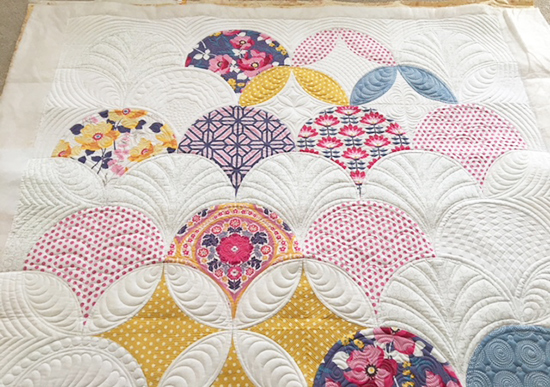
It’s interesting that she didn’t choose just one and use it over and over. She has enough repetition to hold things together, but enough variety to spice things up. That can be a tricky balance but Jane did it beautifully.
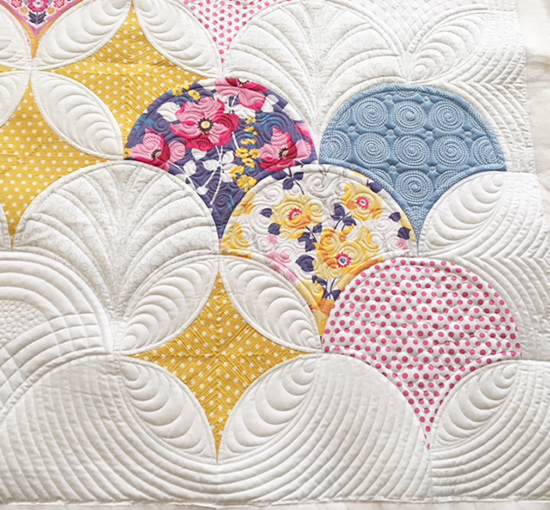
Now I want to make a Clamshell quilt!
And that brings up something else I have noticed: People who do beautiful quilting often plan piecing and applique in order to showcase their quilting. They have quilting ideas and they make tops in order to execute those quilting ideas! That is a new concept for me.
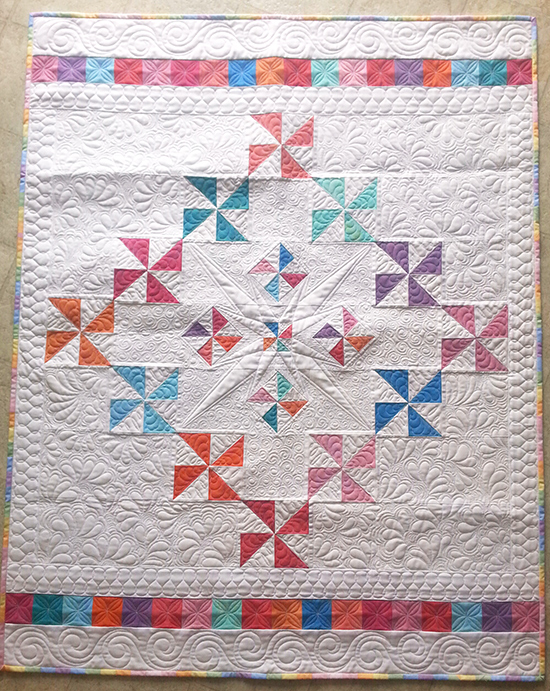
Baby quilt designed, pieced and quilted by Jane Hauprich.
I suspect that’s how this baby quilt came about. It makes sense to leave wide open spaces when you want to play up your quilting designs.
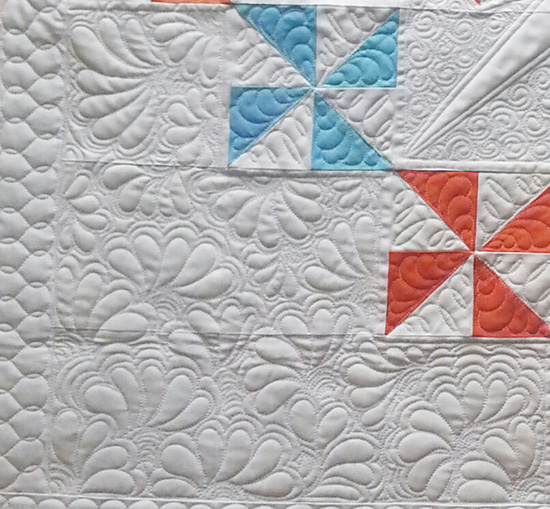
Longarmers call this “real estate.” They love having lots of real estate in which to play. Now I understand why.
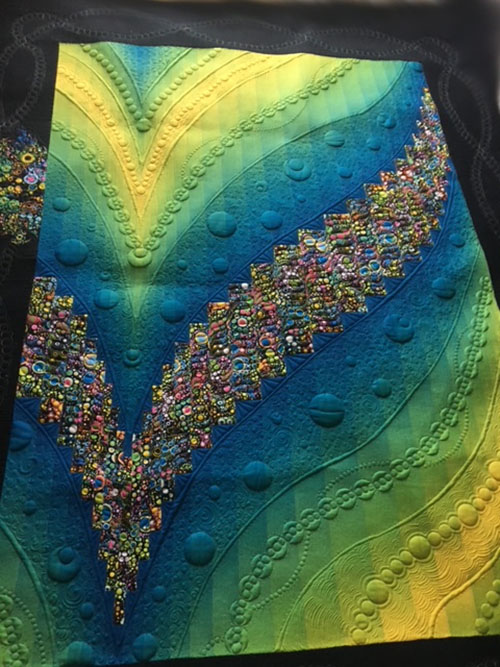
Checkmate, pieced by Ellen Simmons, Chestertown, Maryland. Quilted by Jane Hauprich.
Checkmate, pieced by Ellen Simmons, is another example of adding design elements with quilting. Jane echoed the shape of the printed fabric in the ombré background but used more and less density to create new shapes and lines. It’s a quilt you could look at for a long time.

Designer and author Jo Morton says that the hallmark of a successful quilt is its ability to capture your attention and keep you looking!
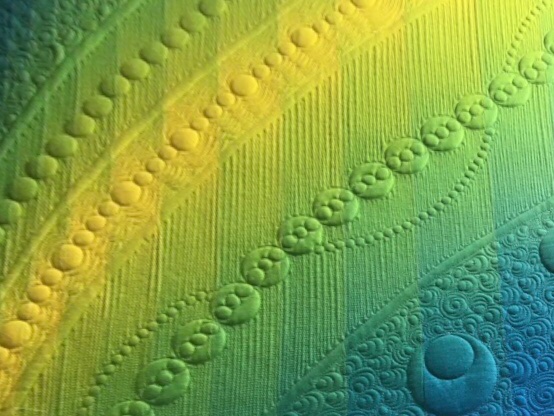
It takes years of practice to achieve this level of quilting expertise. So how and where can an ordinary quilter begin to apply the idea of adding lines and shapes to her quilt top? That’s coming up in the next post.
Quilt on,


Wonderful post! Very inspiring, and lots of eye candy! 🙂
You know that I printed this one!!!! Thank You!!
Absolutely stunning and so beautiful! I am awaiting delivery of a longarm package now but these quilting designs have blown me away …will I ever be able to accomplish such beauty? Not sure I will live long enough to do so!!
Incredibly beautiful. The eye cannot stop wandering over the perfect stitching. Gives me courage to expand my own horizons. Thank you for sharing! Muriel
Wow some stunning quilts. This pictures have given me a lot of inspiration. Thank you for sharing.
Love seeing the quilting designs. Very inspiring.
So inspiring. Thanks for sharing
You can see the basic rule of divide and conquer in each of these gorgeous examples of the art. Break up the space into discrete segments and focus on quilting each segment, one at a time. If the piecing itself doesn’t give you a general outline, then make up your own, like in the Postcard from Sweden quilt. That complete breakout from the piecing structure fascinates me whenever I see it done.
Stunning. My goal is to become such a fabulous quilter! At the beginning of my journey.
Just beautiful and inspirational, just got my Moxie, so excited and practicing, will not live long enough to do work like these.